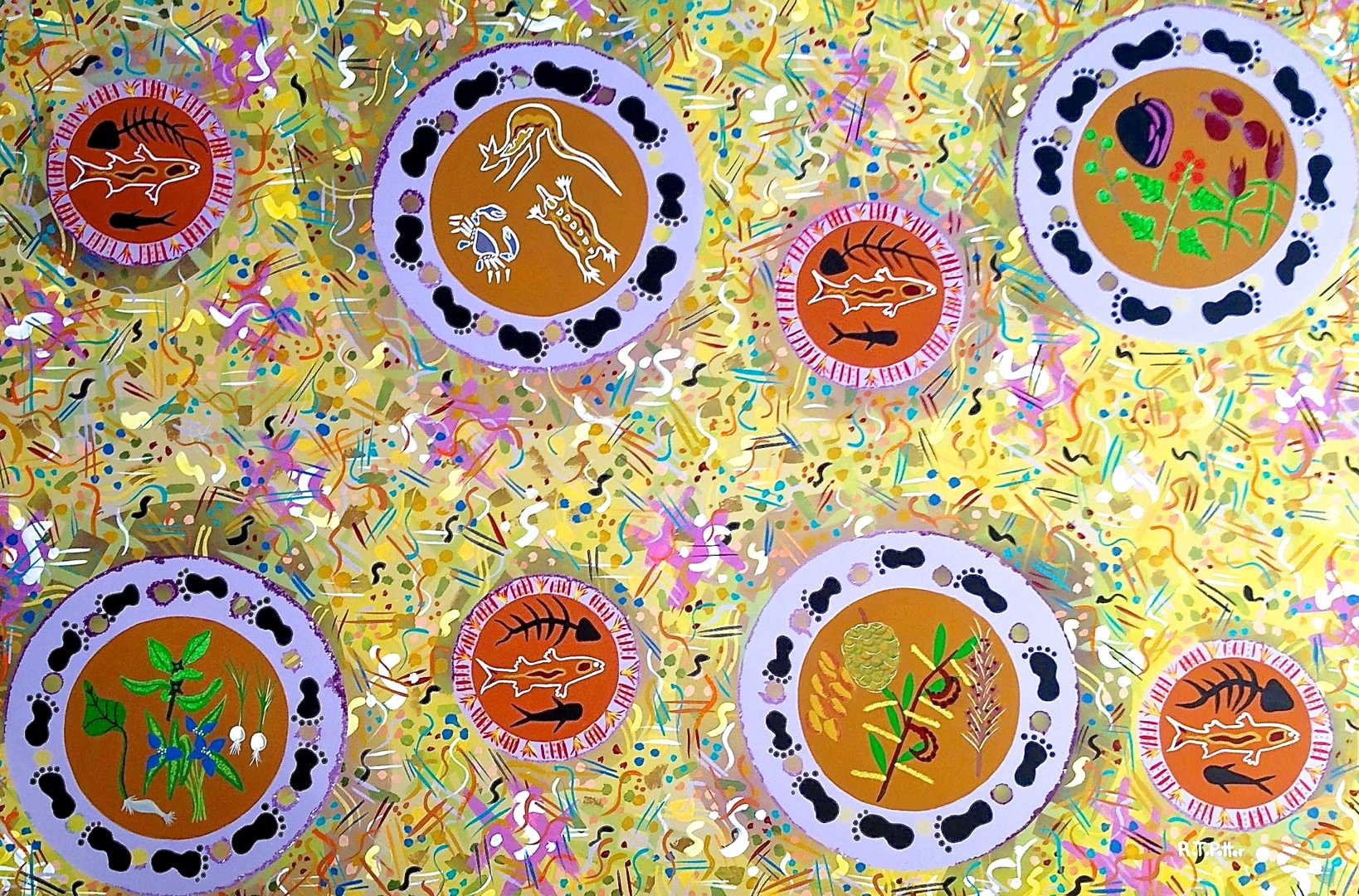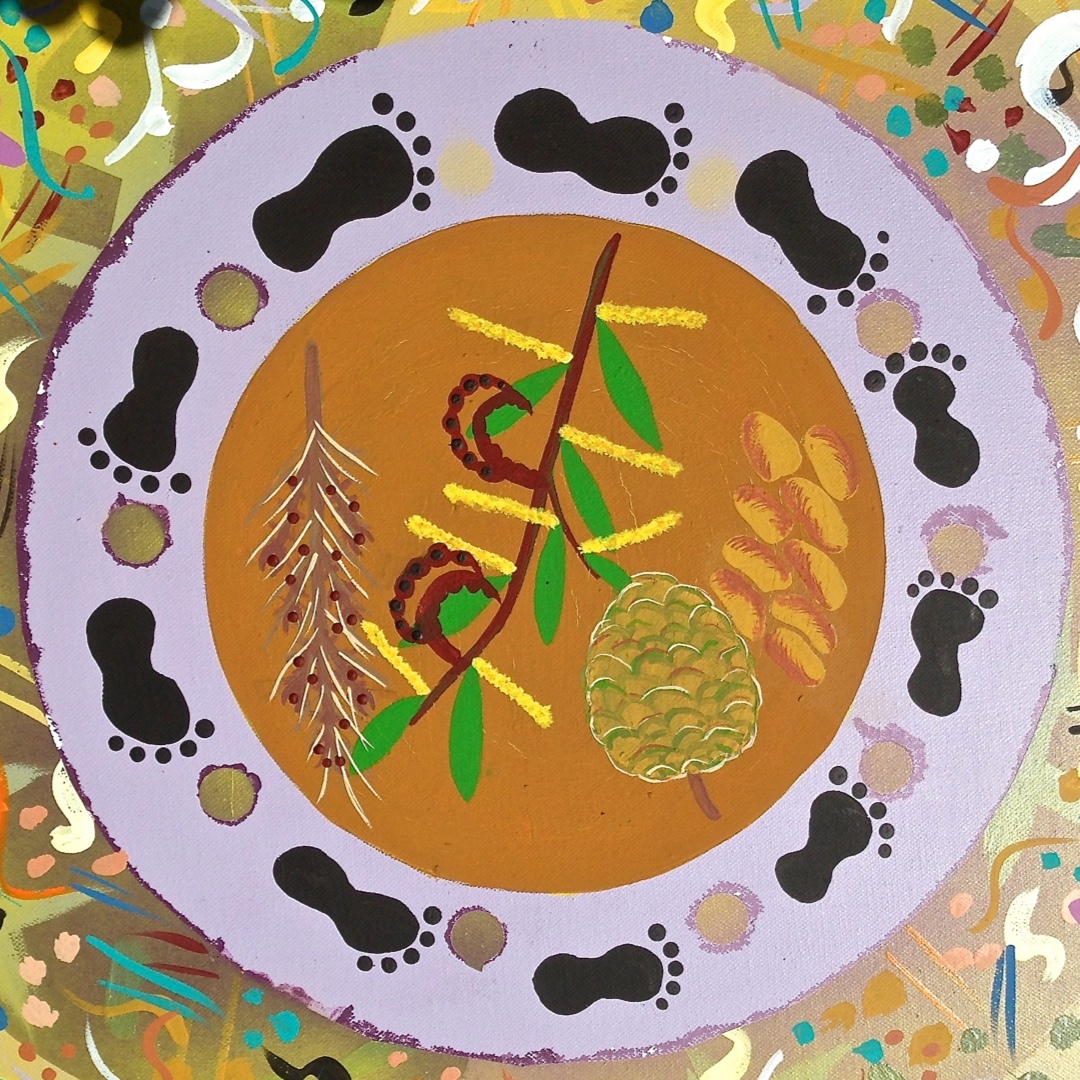Aboriginal artist Ron Potter tells us how his artwork shows the different kinds of foods found within the Worimi country, and how it represents the the fire, rain and shelter elements of life.
In an interview with the artist, Ron talks about the different kinds of foods eaten and how they make up the different elements of the diet for the Worimi people, and how this food was hunted and gathered in a sustainable way.
Interviewer: “So Ron, in the picture that we can see here, how have you represented the fire, rain and shelter components of life and how that matched in with the foods that were eaten?”
Ron Potter: “With the fire and rain, the background of the artwork itself represents the rain and the outside elements. The fire is represented from the circles around the fish with the red and the yellow in the four circles of the fish. The shelter: –that is a representation of movement, because movement is where shelter is. So shelter is moving around country.”
Interviewer: “So, what we would now call something like ‘sustainability’ was just a part of life wasn’t it? That you were looking for food sources that were available at the time, they weren’t being over hunted so that there was still food there, it was seasonal and you weren’t making a big footprint on the land.
Ron Potter: “Well that’s right, in the Worimi it’s a fair sized country and its resources, in particular food and other shelter, was very abundant, so the moving around was not a problem and that’s sustained that healthy fitness of moving and developing the land. When I say developing the land, I’m talking about using fire and the way they used animals within the fire system.”
Listen to the interview ...
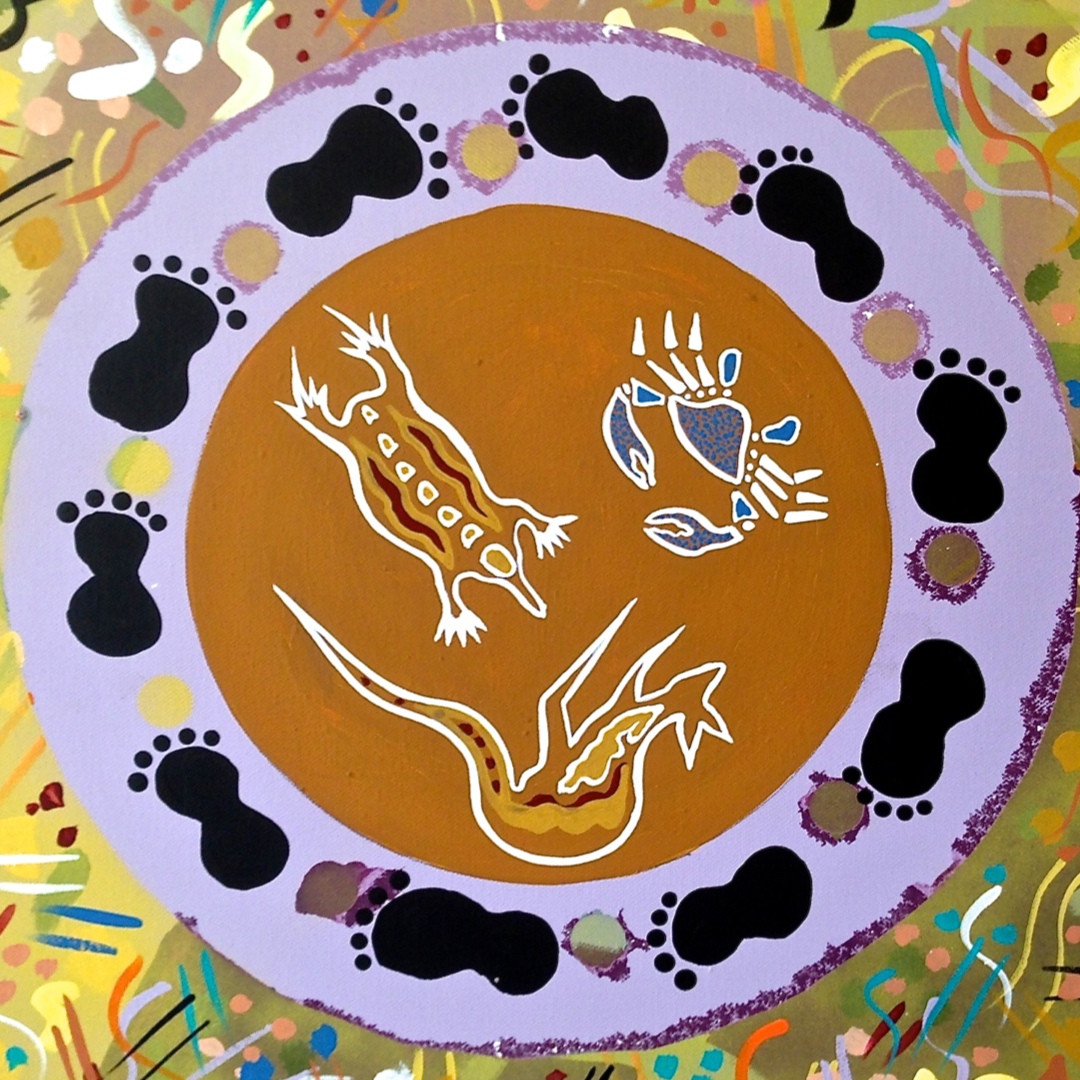
Interviewer: “[In] this picture, what’s representing to us that meat and protein sort of food group?”
Ron Potter: “Well in that, I’ve represented kangaroo, echidna, crab, of course goanna — and there was many other things that would represent the meat and protein areas of the dietary guidelines.”
Interviewer: “So we’d be looking at obviously the protein element of those foods, but then, from a nutritional point of view, game meats are really high in iron, and a lot of those seafoods that are represented are high in the Omega-3s that we now put into little capsules for people to eat rather than having them from these natural food sources, and interestingly, kangaroo is also really high in these Omega-3 oils too.”
Listen to the interview ...
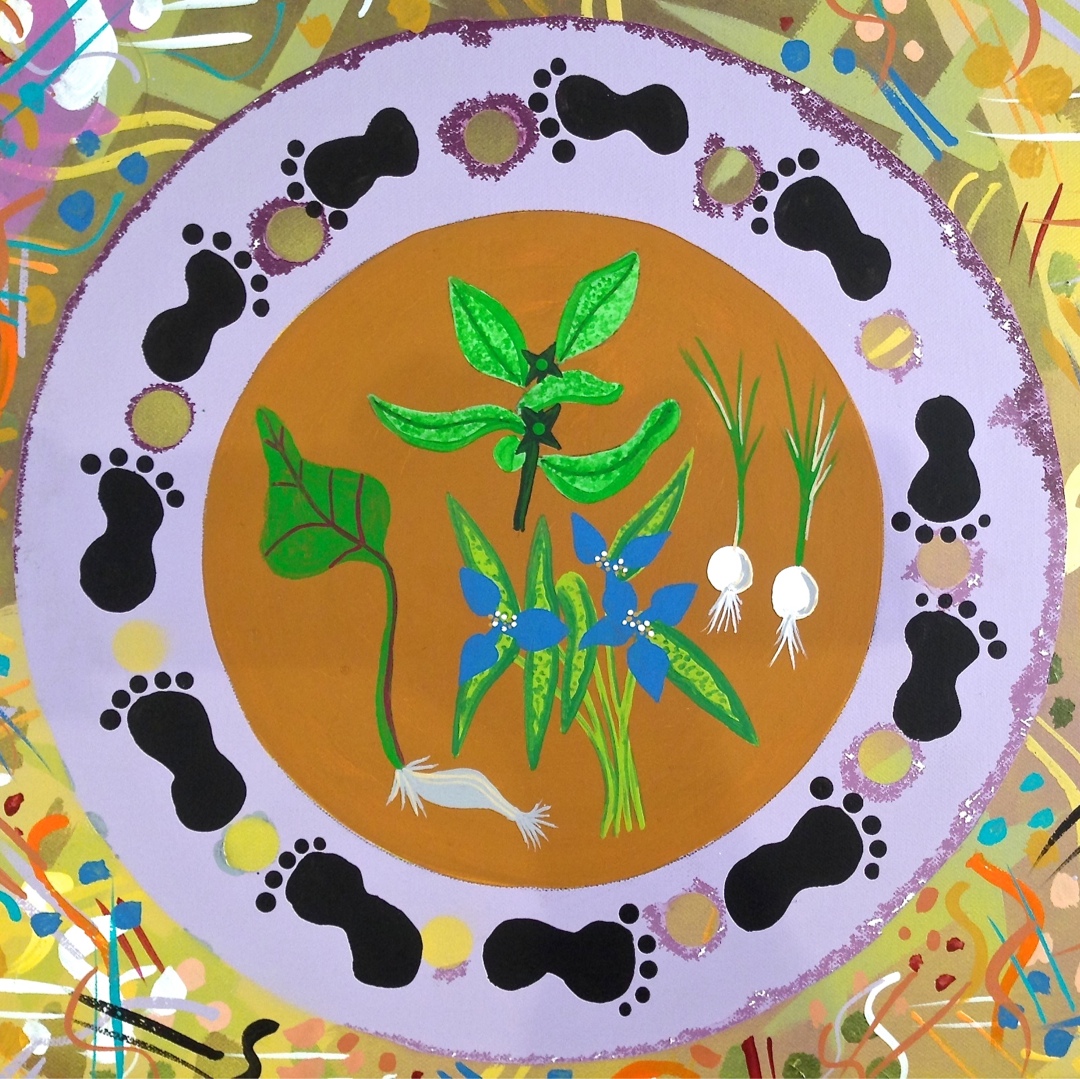
Interviewer: “[And the] vegetables?”
Ron Potter: “And the vegetables, I’ve just depicted it with some Warrigal[?] green, some yams, and just tubers in general because there’s many types of tubers out there — there’s bulbous ones and there’s clumpy ones. And there’s a whole range of them so I couldn’t fit too much more in there.”
Interviewer: “So they’re all the ones down on the bottom-left hand side—”
Ron Potter: “—that’s the bottom-left hand corner.”
Interviewer: “But we got starchy vegetables, you’ve got those leafy greens, like Warrigals, and they’re all going to be providing different types of nutrients.”
Listen to the interview ...
Interviewer: “[So here] we’re talking about fruits and vegetables, which parts of the picture here are representing that?”
Ron Potter: “Well up here on the right hand corner we have the fruit sections which I have depicted with some black apple, pigface, wild raspberry, and some Jimang and Plumpon.”
Interviewer: “Great, and some of those, if you know where to look you can still find them around Forster and Tuncurry country.”
Ron Potter: “Yes, they’re still around this area and I just want to try to keep locally that’s still around. I probably understand and I’m sure there was numerous more stuff that was eating as a fruit.”
Listen to the interview ...
Ron Potter: “On the bottom-right hand side in the larger circle, we’ve got some Limanjura there, and some wattle, and Bunyapon. Now, once again, I imagine there was a whole range more of seeds that would have been ground and used for breads and dampers and other things. But I’ve just depict them because they’re still very much around here, and if you look around, there’s wattle everywhere.”
Listen to the interview ...
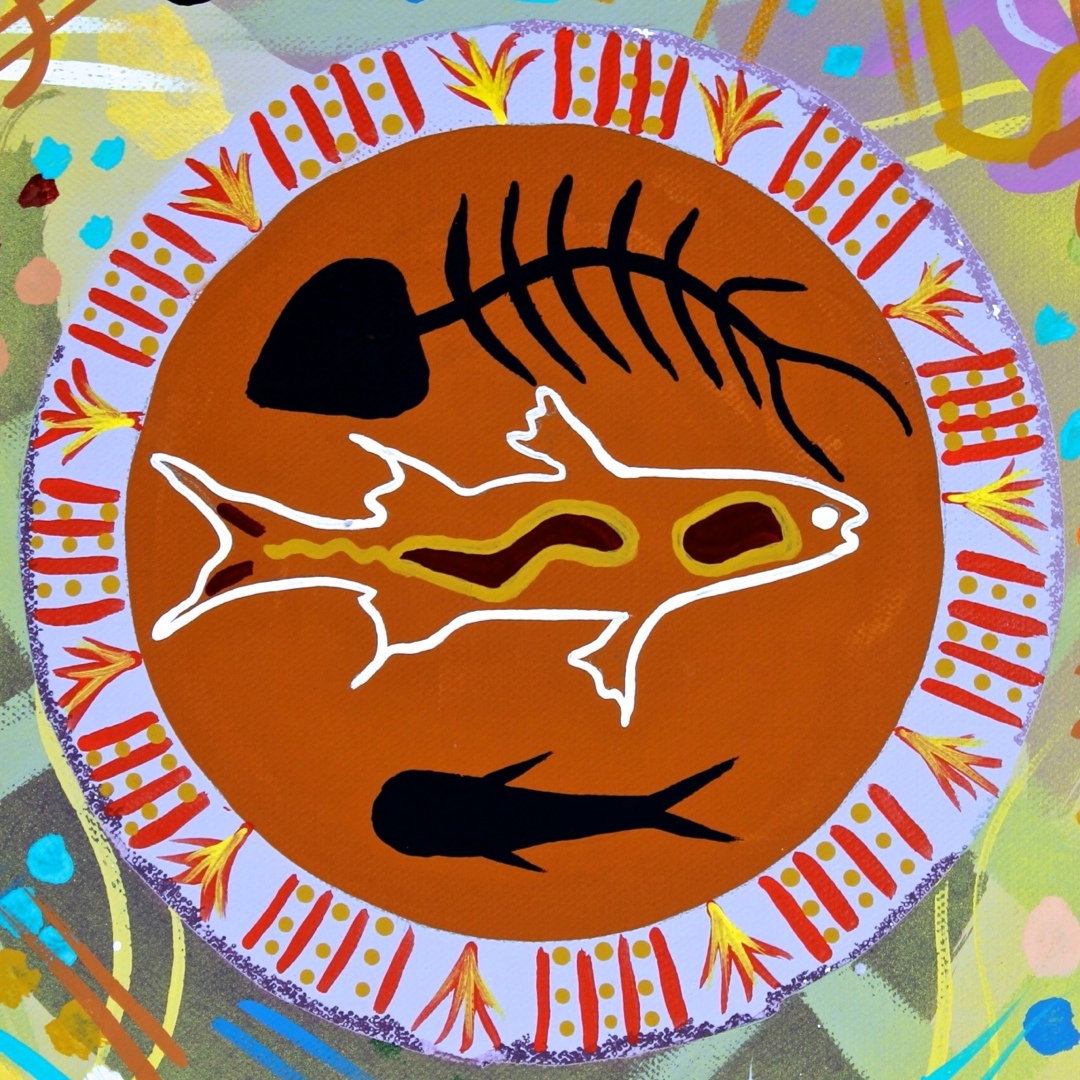
Interviewer: “And the calcium from dairy foods seems to be something that’s absent from a traditional diet, but I’m imagining that through edible bones of seafood and the shells of crustaceans and also a higher vitamin and mineral content in the soil, there were probably lots of foods that were naturally high in calcium.”
Ron Potter: “Yeah I think if we look back through a lot of the vegetables and fruits that they produce calcium from lots of them too, and like you said, the fish—you would throw straight onto a fire, you would mainly eat a lot of the shells and the scales and mush that all up in to it. So I think in relation to calcium, I see that they got it from a whole range of foods.”
Listen to the interview ...
